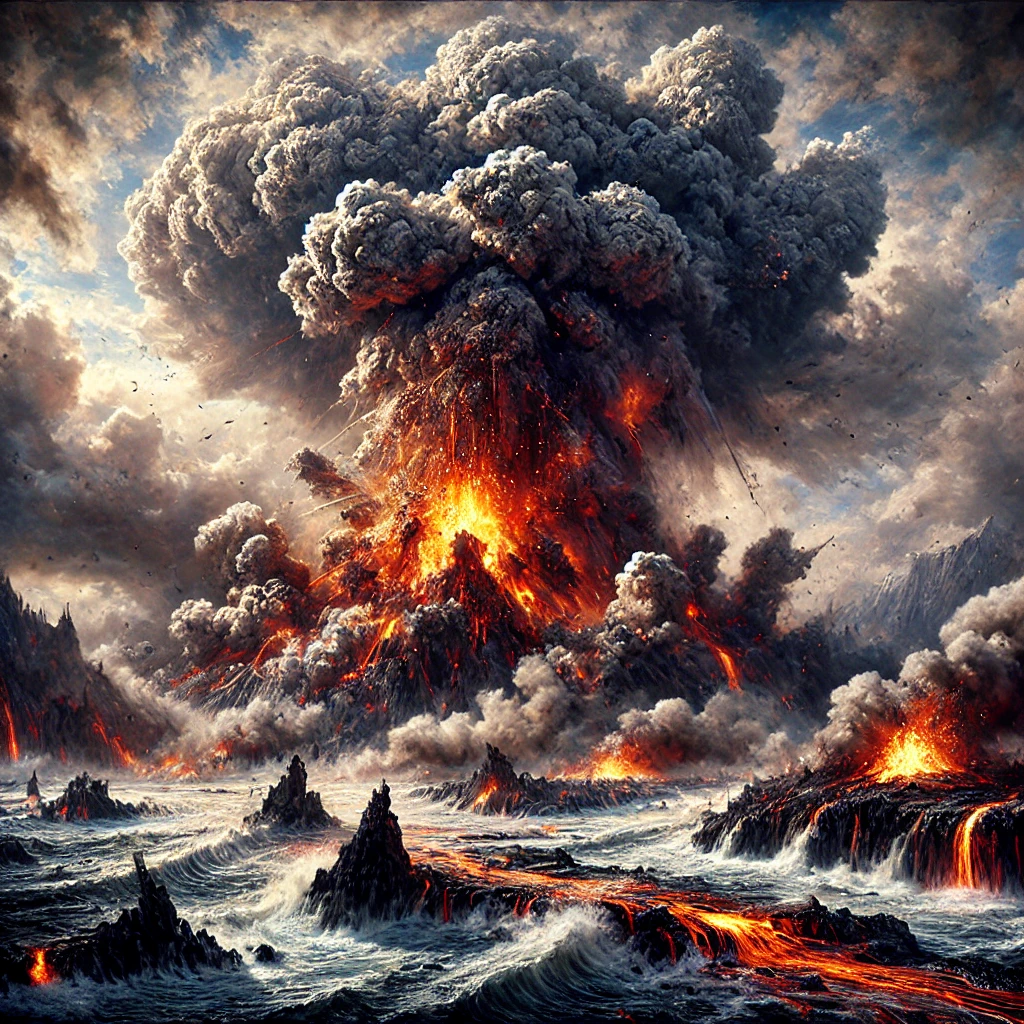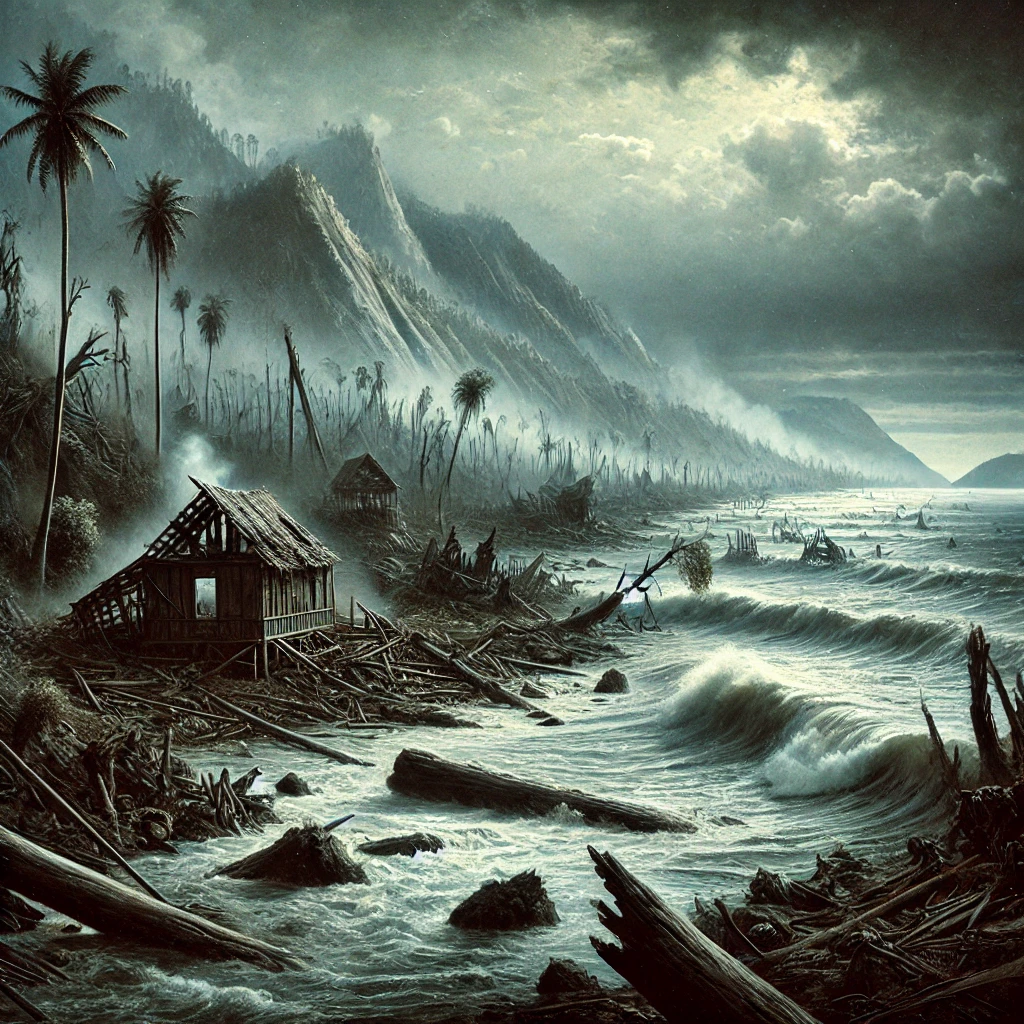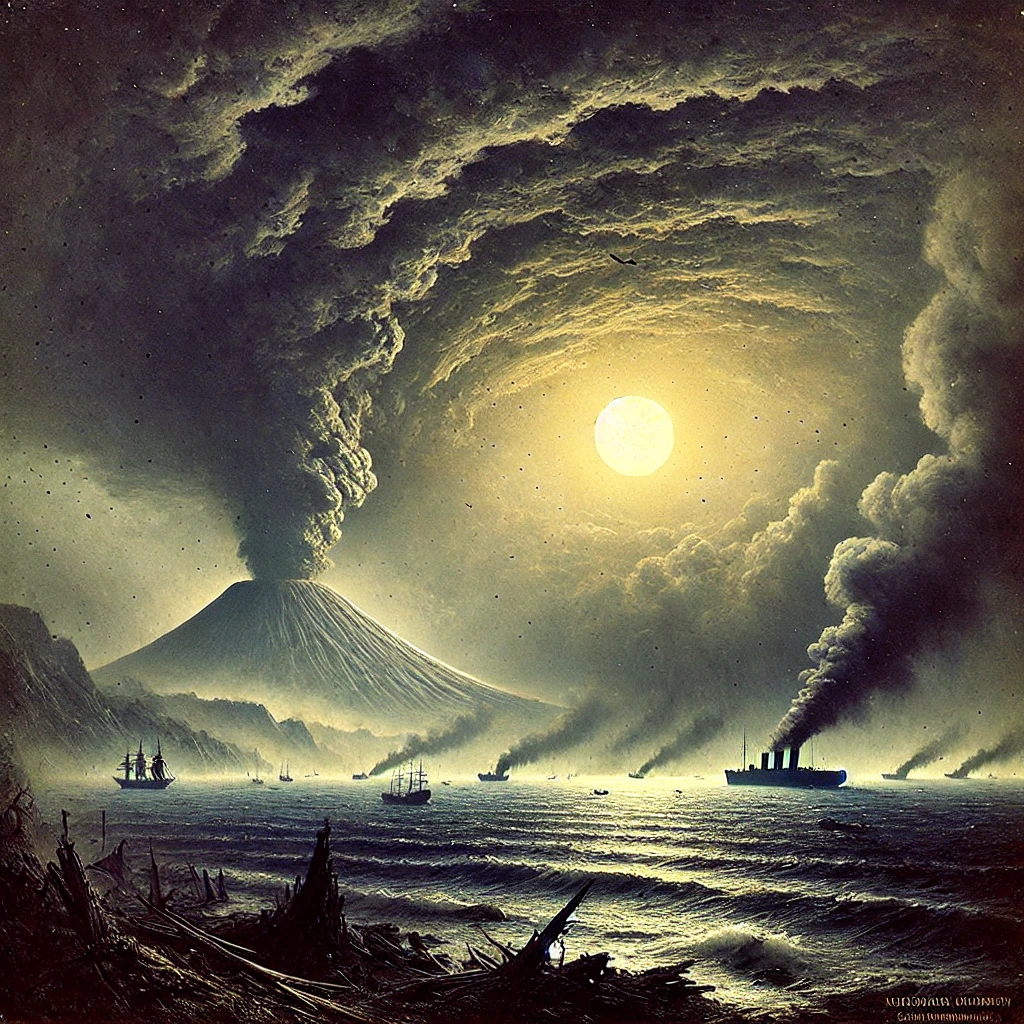On August 27, 1883, the volcanic island of Krakatoa, situated in the Sunda Strait between Java and Sumatra in Indonesia, erupted in one of the most violent volcanic events ever recorded. The eruption was characterized by a series of colossal explosions that could be heard thousands of miles away, including as far as Australia and the island of Rodrigues in the Indian Ocean. The initial blast on August 26th set off a chain reaction of subsequent explosions that continued into August 27th, culminating in the collapse of the island’s volcanic cone. The explosion was so powerful that it caused the island of Krakatoa to collapse into the caldera, resulting in a significant loss of landmass.
The eruption triggered a series of devastating tsunamis that struck the coasts of Java and Sumatra, with waves reaching up to 120 feet high. The waves caused widespread destruction, obliterating entire coastal villages and leading to a staggering number of casualties. It is estimated that over 36,000 people perished as a result of the tsunamis and the volcanic ash fallout, making it one of the deadliest volcanic events in recorded history.

The Global Impact
The eruption of Krakatoa had profound global consequences, particularly in terms of climate and atmospheric conditions. The immense amounts of volcanic ash and sulfur dioxide ejected into the atmosphere led to a significant cooling effect, with global temperatures dropping by as much as 1.2 degrees Celsius (2.2 degrees Fahrenheit) over the following year. This climatic disturbance caused what became known as the “year without a summer” in 1884, with reports of unusually cold temperatures and disrupted weather patterns worldwide.
The eruption’s impact on climate and weather patterns also included vivid sunsets and strange atmospheric phenomena observed across the globe. The particles released by the eruption created spectacular sunsets and atmospheric optical effects that were documented in numerous locations far from the eruption site. These effects provided early evidence of the broader climatic influence of volcanic eruptions on the Earth’s atmosphere.

The Legacy of Krakatoa
The Krakatoa eruption of August 27, 1883, remains one of the most significant volcanic events in history due to its magnitude and far-reaching effects. The disaster not only altered the local geography but also had a lasting impact on scientific understanding of volcanic activity and its global consequences. The eruption highlighted the potential for volcanic events to influence global climate and weather patterns, leading to increased scientific interest and research into volcanic and atmospheric sciences.

The event has also left a lasting legacy in popular culture and historical literature. The dramatic nature of the eruption and its aftermath have been depicted in various studies, books, and media representations. August 27th stands as a stark reminder of the immense power of natural disasters and their ability to shape both local environments and global conditions, underscoring the need for ongoing study and preparedness in the face of such extraordinary events.
